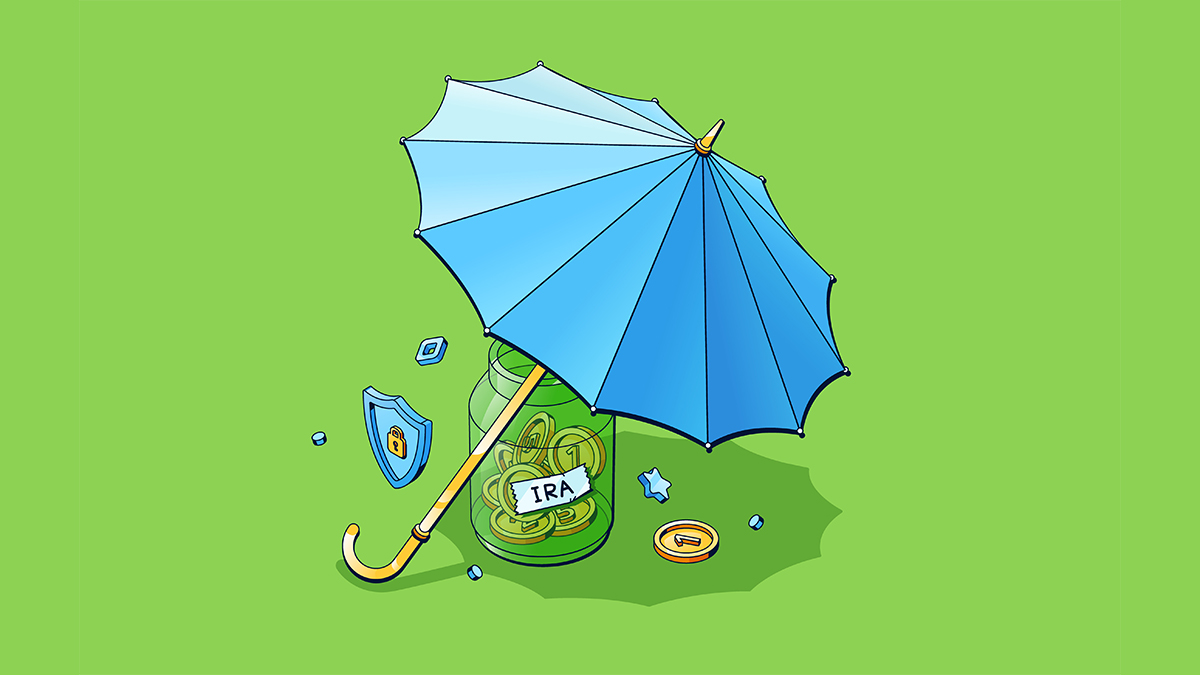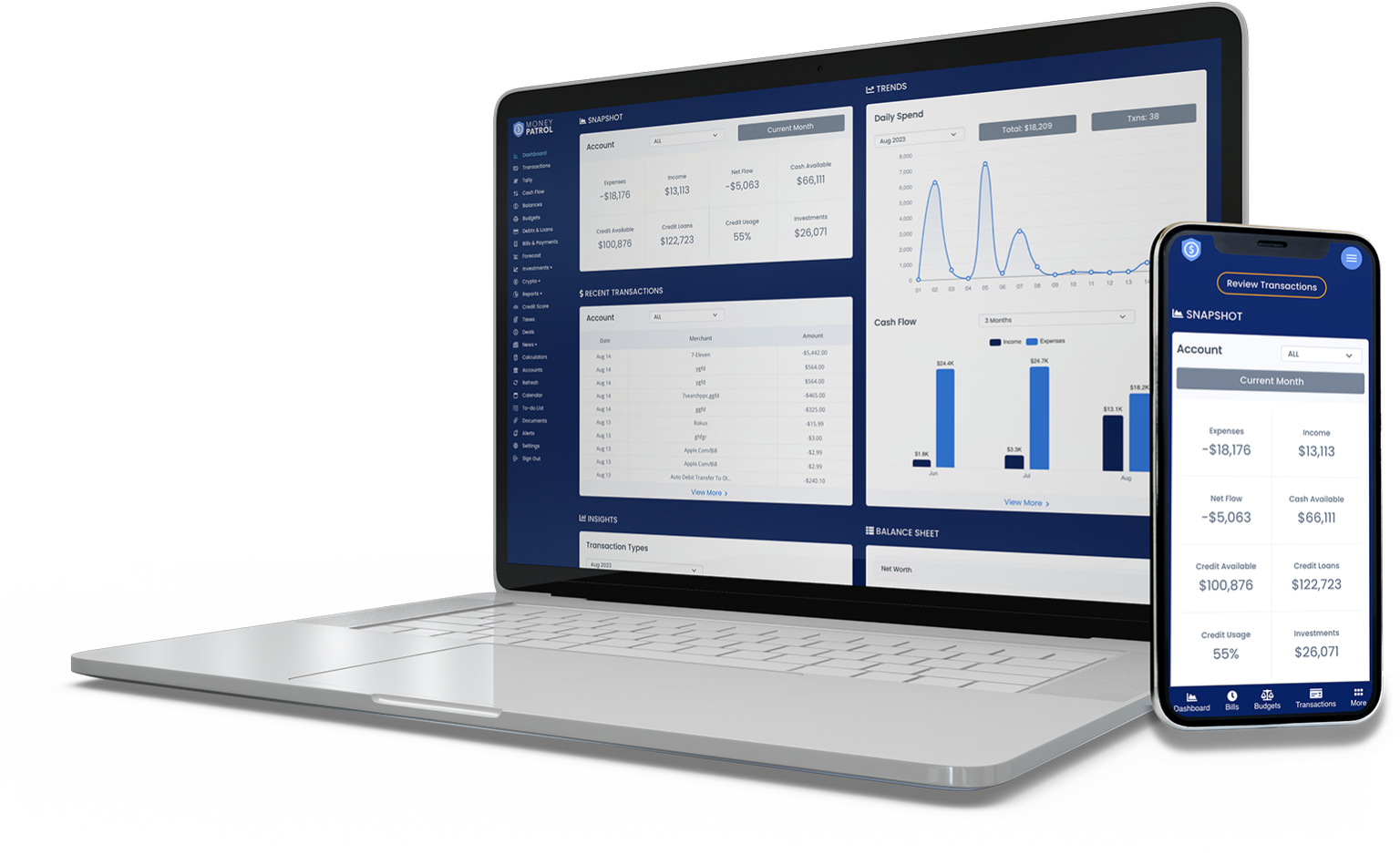Individual Retirement Account (IRA) helps you save for your retirement. Thereby making it the most significant financial goal of your life! It enables you to invest your savings smartly so that it grows over time.
- It even lets you get attractive tax perks, especially if you don’t have an employer-sponsored 401(k) or you’ve already reached its threshold.
Personal financial advisors frequently discuss the “time value of money,” or how investing early in life will significantly benefit you more than keeping pace later.
If you put money into an IRA when you’re still in your twenties and earn a reasonable rate of return, you’ll be trying to optimize the cumulative effect of your money. You should be in a good position when you retire if you pay yourself first and contribute to retirement accounts for the duration of your working years.
Most importantly, you won’t have to worry when you’re in your 50s or 60s and find you don’t have enough money to retire.
- Opening an IRA for the first time can be tricky. It is one of the most brilliant things to do, but most people get intimidated because it might seem hard.
Opening an IRA account at your bank or investment agency is usually simple. Money market funds, mutual funds, equities, and other investments are often available through these institutions.
- You aren’t confined to only these investments, either.
- You can invest in particular coins (which must be held by a custodian), as well as mortgages, real estate, and a variety of other assets.
- Ensure the institution you choose allows the type of investment you want to make.
Table of Content:
What is an Individual Retirement Account (IRA)?
What are the Benefits of an Individual Retirement Account (IRA)?
Types of Individual Retirement Account (IRA)?
1. What is Roth Individual Retirement Account ( Roth IRA)?
What are the Benefits of a Roth IRA?
2. What is a Traditional Individual Retirement Account (Traditional IRA)?
What are the Benefits of Traditional IRA?
3. What is Simplified Employee Pension IRA (SEP-IRA)?
What are the Benefits of SEP-IRA?
How to Create an Individual Retirement Account (IRA)?
Step 1: Decide on the Best Option for You
Step 2: Opening an Account
Step 3: Making Contributions
What is an Individual Retirement Account (IRA)?
One of the most significant benefits of investing in an IRA is that you’ll have a far more extensive selection of investments to pick from. 401(k) plans typically have a few dozen investment funds from which to choose. Your IRA funds, on the other hand, can be invested in practically any stock, bond, or mutual fund you can conceive of. For instance, if you wish to invest some of your retirement funds in Berkshire Hathaway stock, you can do so through an IRA.
- There are two main types of IRAs: traditional and Roth.
- All contributions to a traditional IRA are tax-deductible and reduce your current year’s revenue by the percentage of your contribution.
- When you remove money from your retirement account, you must pay regular income tax on it.

The Roth is a more recent variant. You cannot deduct your contributions under this plan, and you should pay taxes on the income invested now. You can, however, retrieve the money tax-free once you retire.
- The best plan for you relies on when you would like to be responsible for paying your taxes.
If knowing that your IRA retirement income, including gains on your contributions, will be tax-free throughout your old age, the Roth is the way to go.
- The ideal IRA has to be the one in which you routinely contribute.
The tax advantage is the most obvious incentive to start an IRA. If you invest in a traditional IRA, then it could be able to deduct the total amount of your contribution, up to the IRS’s yearly maximum.
- If you opt to start a Roth IRA and meet the eligibility requirements, any eligible outflows from the account will be tax-free, regardless of how much your investments increase.
It’s also worth noting that your contributions aren’t needed to be completed well before the end of the year. You have until the end of the tax year to make your investment and take advantage of the benefits.
What are the Benefits of an Individual Retirement Account (IRA)?
The main reason to start an IRA is to increase your retirement financial stability.
Many people are unaware that Social Security is only intended to replace roughly 40% of a typical worker’s income.
- Meanwhile, most financial advisors believe that to retain the same quality of living in retirement. Most people will require a retirement fund that yields around 70% and 90% of their income before income.
Here’s the most compelling argument to start an IRA right now. The principle of tax-deferred compounding becomes stronger the more extended your investments remain in your IRA.
- To put it another way, a modest sum of money can grow into a significant sum of money over the years, notably if you don’t have to pay tax on your profits or gains or losses each year.
The goal of an IRA is to put money aside for retirement. Anyone can open one, and some people even have the option of doing so within one’s place of employment. The money you put into such account pools is invested and earns interest over time, so the more you put in, the more you make.
- It allows you to gradually accumulate a sizable retirement fund whether you expect to retire in five years or thirty. You are adding to an IRA as soon as feasible allows your money to generate interest for as long as possible before you need it.
While there are several kinds of IRAs, traditional and Roth IRAs are the most common types. With both of them, you can quickly start investing in various assets by putting a certain amount towards retirement each year.

1. What is Roth Individual Retirement Account (Roth IRA)?
If your income falls short of a certain amount, only you can contribute to a Roth IRA. For 2019 & 2020, if you’re single and your modified adjusted gross income, or AGI, is under $122,000, your contribution can be up to $6,000 per year. On the other hand, for age 50 and above, your contribution can be an additional $1,000.
- Now, let’s say you’re married and filing jointly, then your AGI can be up to $196,000. But if your earnings are more than the assigned amount, you have the liberty to contribute a lesser amount or open a traditional IRA.
Your tax situation will get affected by the type of IRA you choose. In the case of a Roth IRA, since you’ve contributed with the after-tax income, you wouldn’t have to pay taxes again when you’re withdrawing the money upon retirement.
- The best thing about Roth IRA is that you can contribute money at any age, which means that even if you’re 85 but still earning income, you can contribute a portion of that to your retirement account.
Finally, a Roth IRA is more flexible than a traditional IRA when withdrawing contributions. Which means you can withdraw money without being penalized.
There are rules, but they’re not as strict as the regulations for traditional accounts.
If you qualify and expect to be in a higher or similar tax bracket when you retire, you can go with a Roth IRA. The best is to consult a tax professional to help you work through the numbers hassle-free!

What are the Benefits of a Roth IRA?
Tax advantages and the elimination of minimum needed distributions during retirement are perhaps two of the essential elements of a Roth IRA. Here’s why these two factors are so important?
- Roth IRA projects are funded with after-tax dollars, and because the money has already been taxed, the gains in your IRA can grow tax-free.
- Furthermore, because you are not obligated to take withdrawals from the account after you reach retirement age as it sets the Roth apart from other retirement plans, the capital can be maintained in the account to grow tax-free for as long as you desire.
A Roth IRA is self-directed retirement savings account that you would start with any financial institution.
Unlike a typical IRA, you put after-tax cash to a Roth IRA, but your income sits tax-free and can be retrieved tax-free in retirement.
You can have both a Roth IRA and a 401(k), and both can be useful for saving for retirement.
2. What is a Traditional Individual Retirement Account (Traditional IRA)?
Regardless of how much money you earn per year, you can open a traditional IRA if you have a taxable income. In a traditional IRA, you can deduct your contributions on your tax returns now, which means you will have to pay taxes on distributions when you retire. That’s one of the most prominent differences between a traditional and a Roth IRA.
- Theoretically speaking, you can keep contributing to a Roth IRA for your entire life, but with a traditional IRA, you should stop contributing at age 70.
Barring a few exceptions, if you withdraw money from your traditional IRA before age 59, you’ll have to pay a 10% penalty tax for it.
- However, if you pay ample taxes now and are sure that you’ll be in a lower tax bracket after retirement than in the year they were made, then it’s better to go with a traditional IRA.
That way, you’ll be saving on a higher tax you’d be paying earlier.
What are the Benefits of Traditional IRA?
The critical difference between a regular IRA and a Roth IRA is the tax structure, which might be advantageous for persons who want to lower their taxable income quickly.
- A tax-deferred account is referred to as a classic IRA. If you qualify, the money you put into a traditional IRA can be deducted from your taxes in the year you make the contributions.
So, do you have a traditional IRA that you may deduct from your taxes? You can reap the deduction benefits regardless of your income if you don’t have any access to a retirement plan via your job. However, if you have a company-sponsored retirement plan, your ability to deduct it is income-based.
- You may be able to deduct all or portion of your payments from your federal taxes if your income falls below IRS guidelines.
- You can take penalty-free withdrawals for specific expenses, such as a first home, a child’s birth, adoption, or college.
You don’t have to start pandering to a traditional IRA as long as you’re working, and you can invest in an IRA in addition to your 401(k).
3. What is Simplified Employee Pension IRA (SEP-IRA)?
If you’re an employer at a small business or someone self-employed, then there’s a third type of IRA you can consider; it’s called SEP IRA or Simplified Employee Pension.
It gives a tax deduction to small employers when they contribute towards their employees’ IRAs and contributes on a “discretionary basis.”
- Simply put, the employer doesn’t necessarily have to contribute in years where it’s not financially feasible for his company.
Depending upon your income, this option may allow you to contribute more than any other IRAs.

What are the Benefits of SEP-IRA?
Because a SEP IRA is organized similarly to a standard IRA, the concept is that you can deduct your deposits today (and so avoid paying taxes).
When that money and its gains are taken when you retire, you must pay that income tax on them.
There is a limit to how often you can subtract from your taxation if you are self-employed. Unfortunately, determining your maximum needs some serious arithmetic.
The IRS provides some to assist you with your calculations, but we recommend enlisting the advice of your preferred tax professional.
How to Create an Individual Retirement Account (IRA)?
Step 1: Decide on the best option for you.
Traditional and Roth IRAs are the most prevalent types of IRAs, while there are others. With both of these, you can quickly begin investing in various assets by setting aside a specific amount each year for retirement.
Step 2: Opening an Account
Assuming you’ve made the decision, you can visit a mutual fund company or any other financial services provider to open an IRA at a brokerage.
If you have an employee-sponsored retirement plan but leave that job, you can convert your 401(k) into a Traditional IRA for better investment options and lower fees.
Step 3: Making Contributions
A contribution of up to $6,000 a year can be made towards a traditional or Roth IRA. If you’re 50 or older, your contribution should be up to $7,000. If you prefer a Roth over a standard account, but you take home more than allowed, you may contribute a reduced amount.

If you want to take total leverage of the power of compound interest, you should contribute generously to that amount each year.
- You may take the help of a retirement calculator that can help you figure out whether you’re on the right track or not.
- If you go by the financial advisors’ rule book: you should typically have the equivalent of one year’s salary saved up by the time you’re 30.
- You can add as much amount as you’d like to your IRA if you’re rolling over from a 401(k).
- There’s no upper limit to it as you’re only adding money from 401(k) to the IRA.
Never treat your retirement account as a piggy bank. However, you may withdraw cash without paying penalties or taxes in situations like you’re purchasing a new home or dealing with great monetary distress. But it’s a good idea to leave it untouched.
Conclusion:
Self-directed IRAs (SDIRAs) allow investors to make all of their own choices and give them access to a broader range of investments, such as real estate and commodities. When you start an IRA, you can invest in various financial instruments, notably exchange-traded funds (ETFs), stocks, mutual funds, and bonds. Only the riskiest investments are prohibited.
- The income from interest, dividends and capital gains can compound each year without taxes nipping away at it.
- In addition, you also can escape taxes on either the money you put into the plan initially or on the money you withdraw in retirement, depending upon whether you choose a traditional or Roth IRA.
Traditional IRAs, Roth IRAs, SEP IRAs, and SIMPLE IRAs are among the various available types. Each has its eligibility, taxes, and withdrawal policies.
- Traditional and Roth IRAs are available to individual taxpayers, and SEP and SIMPLE IRAs are available to smaller businesses and self-employed persons.
- An IRA must be established with a financial institution that has been approved by the Internal Revenue Service to provide these accounts.
- Federally Insured Credit Unions, Savings and Loan Associations Banks, and Brokerage Firms are among the options.
Because IRAs are intended for retirement savings, taking money out before the age of 59 normally results in a 10% penalty. There are a few notable exceptions, such as disbursements for educational expenses and first-time house purchases, to name a few. You will incur income tax on an early repayment if your IRA is a regular account instead of a Roth account.
free budgeting app best free budgeting app budgeting app best free budgeting apps budgeting app free money management app manage money app family budget app personal finance tracker track personal finances budgeting app for couples







 Our users have reported an average of $5K+ positive impact on their personal finances
Our users have reported an average of $5K+ positive impact on their personal finances
